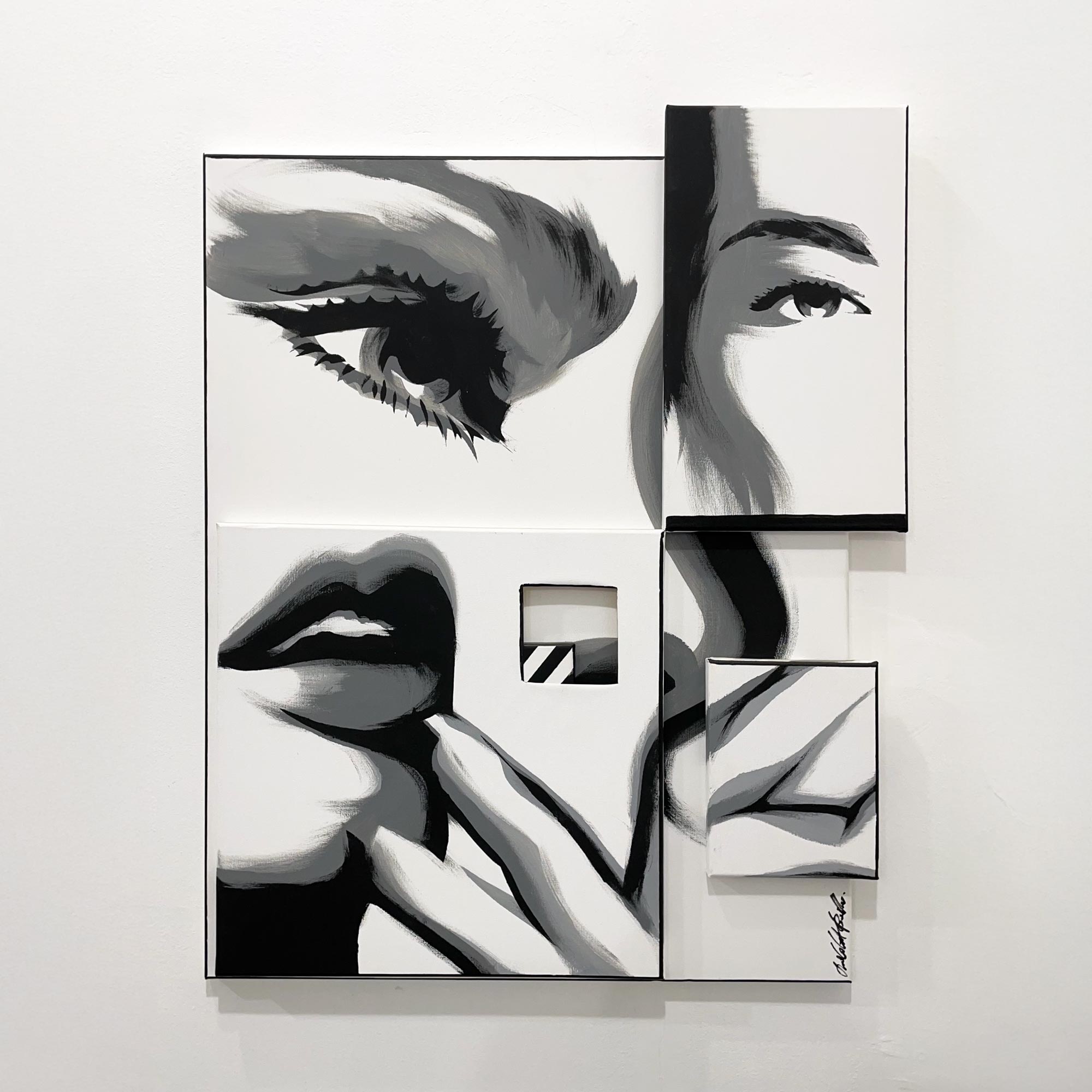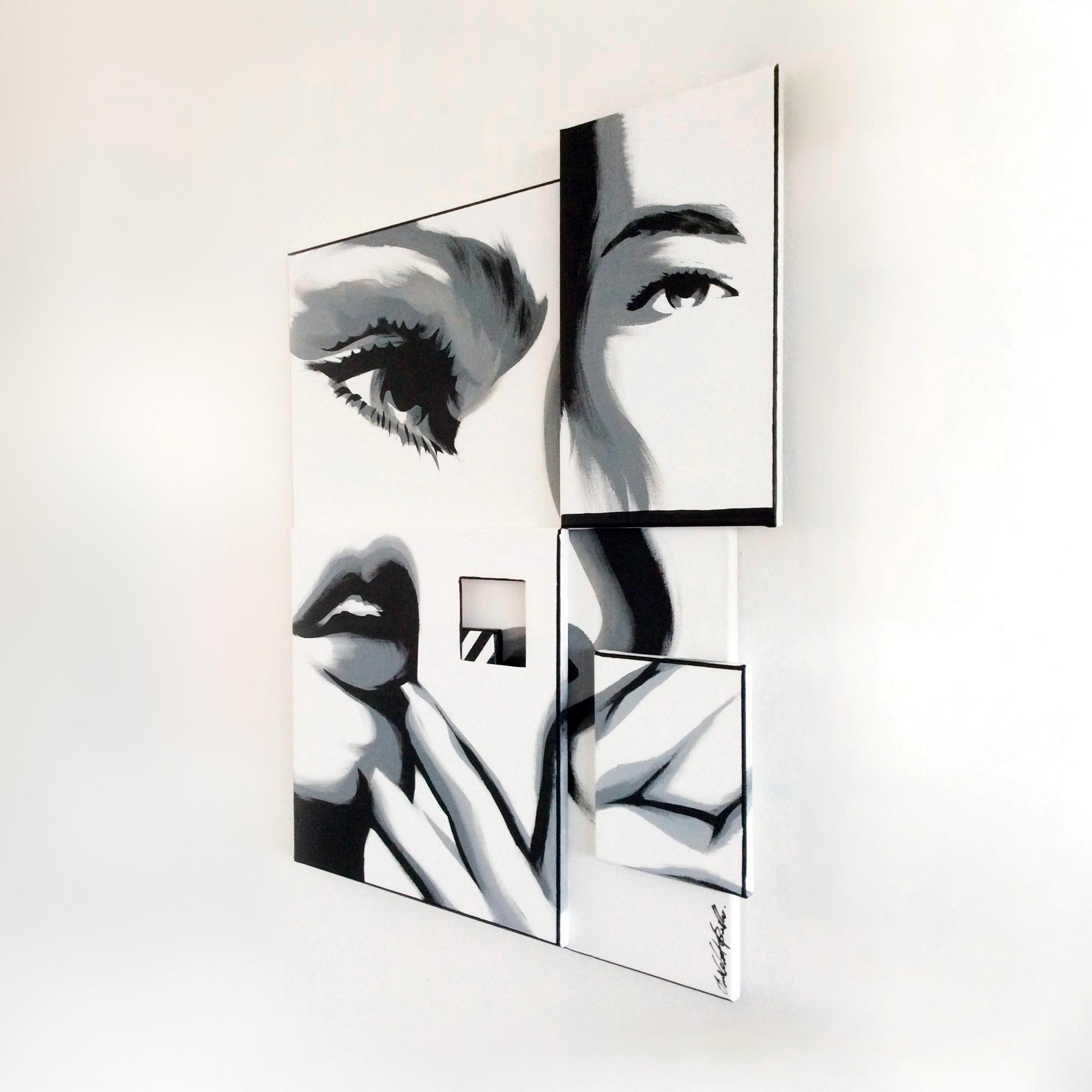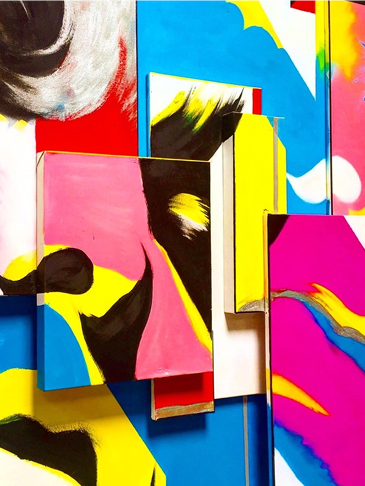Temptation


Temptation acrylic and markers on different layers of canvas 106×76cm cm – 2017
Questa opera, intitolata “Temptation” e firmata dall’artista DutyGorn, è un affascinante polittico contemporaneo che scompone e ricompone i tratti di un volto femminile attraverso un gioco di piani e prospettive. Realizzata con una predominanza di toni monocromatici—bianco, nero e grigio—questa composizione richiama elementi del cubismo, dove la realtà viene frammentata e riorganizzata per offrirne una visione molteplice e concettuale.
L’ispirazione principale di quest’opera sembra provenire dall’esplorazione della femminilità e del desiderio, ma attraverso una lente astratta e scomposta. Le sezioni del volto—occhi, labbra, mani—sono isolate, quasi a voler catturare singolarmente i simboli della seduzione e della tentazione. La scelta di includere piccoli spazi vuoti o finestre all’interno della tela aggiunge profondità e invita l’osservatore a “spiare” dietro la superficie, sottolineando la curiosità e il mistero legati al tema della bellezza.
L’artista sembra voler suscitare nello spettatore un senso di intrigo e riflessione sulla percezione dell’identità e sull’importanza che diamo ai singoli dettagli quando osserviamo un volto o un corpo. La frammentazione visiva induce a soffermarsi sui particolari e a completare mentalmente l’immagine, stimolando pensieri sull’illusione, sull’apparenza e sull’eros.
La scelta della pittura su tela come medium è funzionale alla volontà di mantenere un forte impatto visivo e tattile. Lo stile volutamente astratto e geometrico conferisce all’opera un respiro moderno, mentre il richiamo al cubismo la lega a una tradizione artistica che riflette sulla scomposizione e sulla ricostruzione della figura umana. La composizione polittica rafforza il concetto di visione parziale e frammentata, offrendo allo spettatore l’opportunità di vivere l’opera non solo come un’immagine, ma come un’esperienza da scomporre e ricomporre con lo sguardo.

